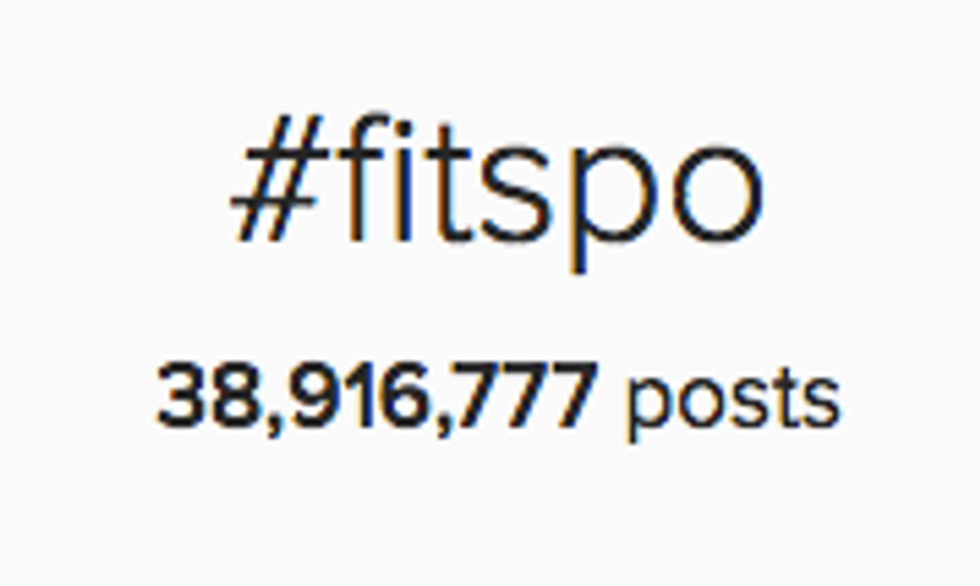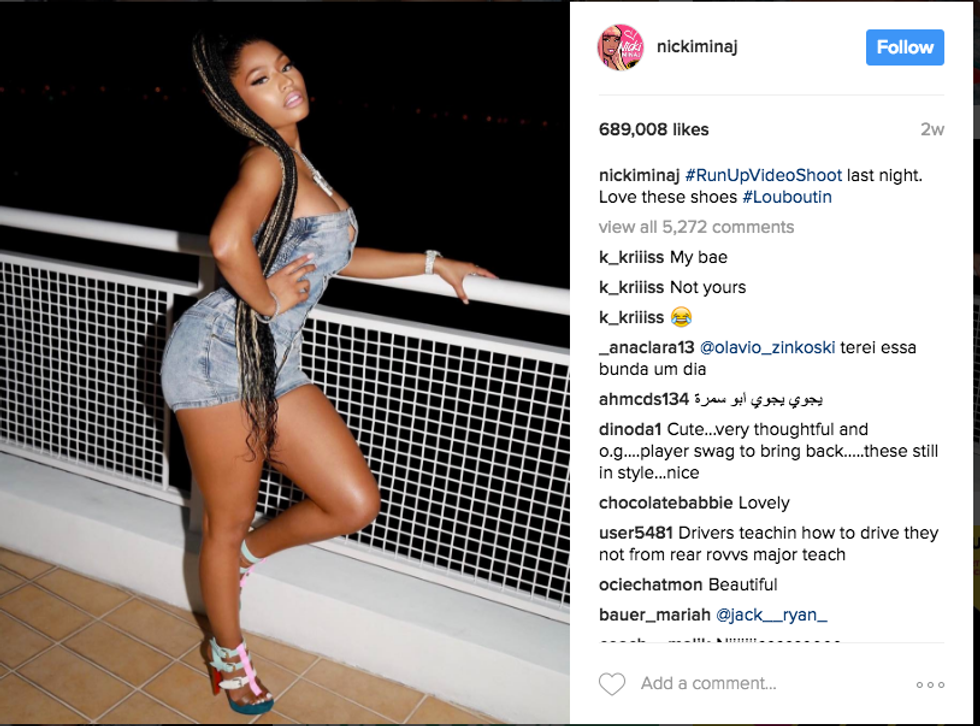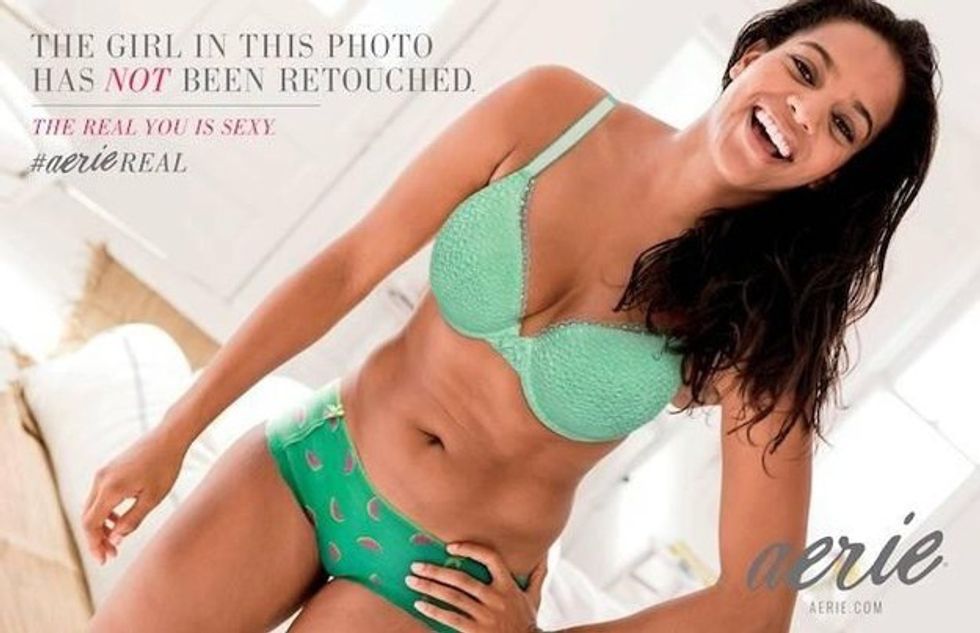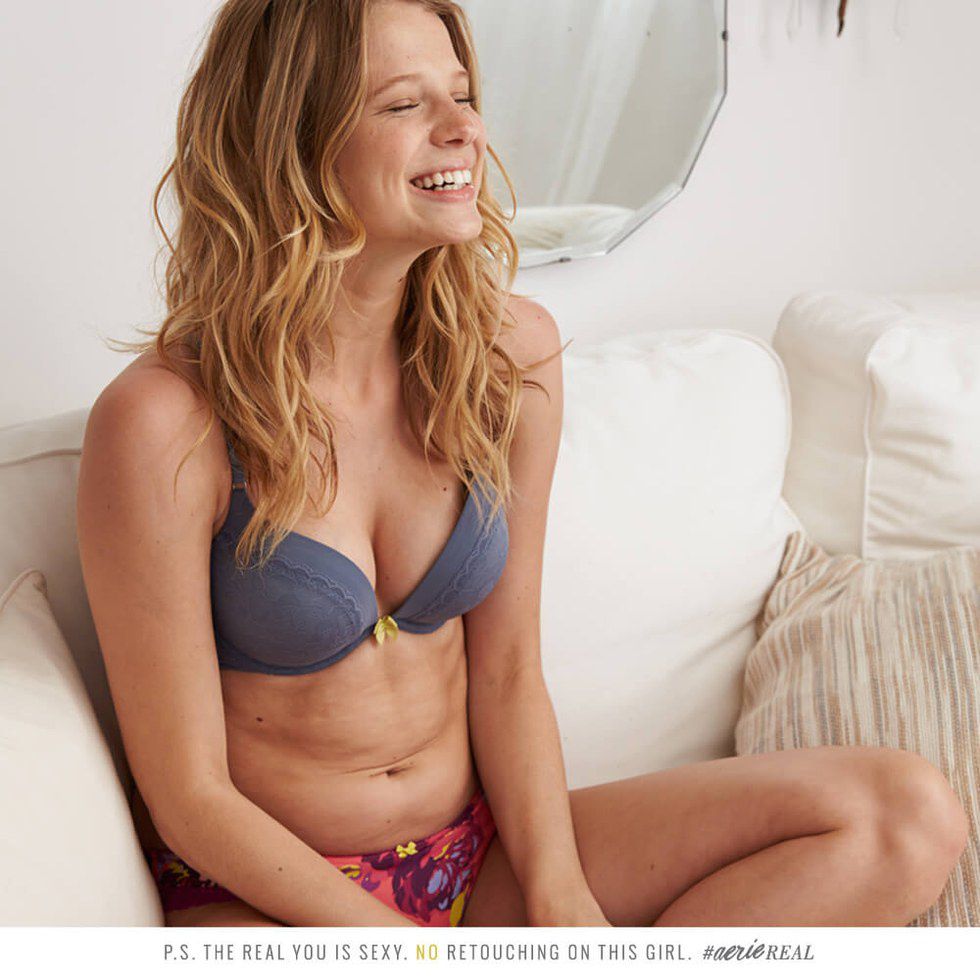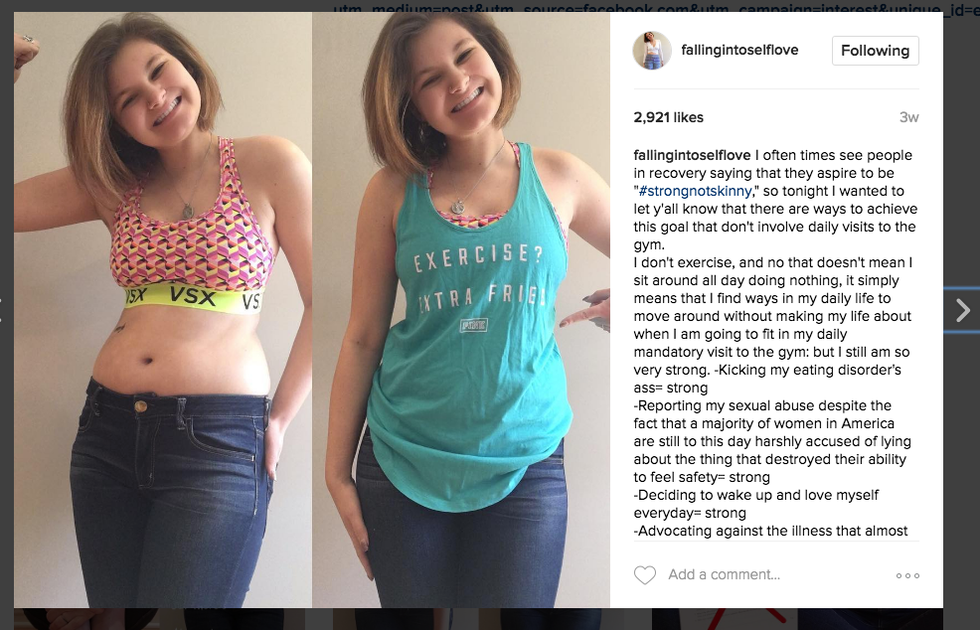[TW: Eating Disorders]
Over the last decade, our societal beauty standards have shifted from one "perfect" body type to another as social media and the fashion and beauty industries pull us in multiple directions. We've had #thinspo encouraging women to lose weight and be skinny, listing diets and promoting eating disorder behaviors, #fitspo encouraging women to be "strong not skinny" and how to work out to get that perfectly toned, not too bulky body, to "All About That Bass" and "Anaconda" promoting "big booties" and Dove and Aerie promoting "real beauty". I'm going to take you on a trip through these societal beauty norms to show you where we're coming from and what we still need to do.
Below is the message that comes up on Tumblr now if you search for the #thinspo tag. It gives you instructions on how to get help for an eating disorder and discourages you from clicking forward to the results. It wasn't always this way. When I first started using Tumblr toward the beginning of high school, I could search it and come up with pages of skinny women, "ana buddies", workouts and diets to lose weight and body shaming mantras. Many of these women had eating disorders, and all felt that thin was the ideal body type. But this wasn't an isolated occurrence -- at the time, thin was our societal beauty standard. Women strove for the perfect body, for a flat stomach and a thigh gap. These women were simply conforming to an extreme version of what we were seeing on television, in advertisements and on the displays when we walked through the mall. Society created this standard, and it needs to be the one to dismantle it.
In recent years, this standard has changed. Instead of Tumblr's #thinspo, we have Instagram's #fitspo. This movement promotes the idea of being "strong not skinny" and focusing on fitness and eating healthy instead of direct weight loss. You can read about people doing the "Whole 30" diet, 12 week fitness challenges, and see before and after transformation pictures of people who subscribe to this movement. As seen below, there are nearly 40 million posts about #fitspo on Instagram, and many of the most popular stars of Instagram and YouTube are fitness personalities. On the surface, this movement claims to be positive -- after all, isn't it better to be strong than skinny? But ultimately, this is still promoting one singular body type over another. This movement still creates rules for women to follow to achieve a "perfect" body type, which is the antithesis of body positivity. True body positivity is devoid of all rules.
One of the most popular fitness Instagrammers is Kayla Itsines, a fitness guru who has an online workout program allegedly promoting being "strong not skinny". As you can see below, she has an enormous number of followers -- 6.3 million! Her Instagram mainly consists of videos of herself exercising and before and after photos of individuals who have subscribed to her workout programs. These images promote the ideal body type of someone who is extremely toned and, according to Kayla, strong not skinny. But ultimately what this does is pressure people into conforming to yet another specific, and often unrealistic, body type.
As I said above, this Nike slogan of "Strong is the new beautiful" may seem body positive on a surface level, but on a deeper examination, it shows that it's simply promoting a new ideal. Strong is beautiful, but it doesn't have to be physical strength. You don't have to work out to be strong, and you don't have to be strong to be beautiful. We need to look below the surface of these statements to see the ways that they fail in promoting true body positivity.
Below, you'll see an image of Nicki Minaj, and the music video for her song "Anaconda". Now, a disclaimer - I have danced to "Anaconda" at many a party, and enjoy listening to Nicki's music. I am not anti-Nicki, I am just examining her promotion of body ideals. Minaj often discusses body ideals, and her song "Anaconda" promotes having a big booty and derides "all the skinny bitches in the club". She is frequently hailed as being body positive because she promotes something other than the typical skinny body type. And this is true, Minaj represents an alternative to conventional (and white) beauty standards. However, she does so at the cost of others. A true body positive movement is all inclusive -- it celebrates the women with "buns" and the "skinny bitches". And for a moment, let's look at the body type Minaj herself represents. She has a big butt, sure, but also large breasts and a very comparatively small waist. This is not a natural, attainable body type. Minaj can afford personal trainers and surgeries to create her body, so promoting it to women creates yet another unrealistic body ideal. So, despite the surface level body positivity of her message, she isn't truly body positive and inclusive.
Another song from the last few years that took a step in the right direction was Meghan Trainor's "All About That Bass". Similar to Minaj's "Anaconda", Trainor promotes having a large butt as an ideal body type. She doesn't go quite as far in speaking against skinny women as Minaj does, but she does continue to promote an ideal body type. This song moves toward body positivity by recognizing that all women, regardless of size "think they're fat", and promotes women embracing their bodies. It may not be a perfect song, but it takes a step toward body positivity.
Looking toward another body positive message, it has been more than a decade since Dove launched its first body positive campaign and created its self esteem project which has had a major influence on our movement toward a more body positive consumer culture. Instead of fitspo or thinspo, Dove doesn't promote a single ideal body type, and this is a huge step in the right direction. Looking at the side by side comparison above between Dove and Victoria's Secret body positive campaigns, one can see the strides that Dove is making. The top photo shows thin, retouched models with the same body type, while the bottom shows six models with different skin tones and body types and little to no retouching. Dove's beauty campaign has worked to inspire women of all ages to embrace the body types that they have and own the skin they're in.
As seen in the below picture, Dove also uses models of different ages, which is extremely rare in the fashion and beauty industries. Dove challenges conventional beauty standards by embracing different ages, body types, stretch marks, freckles, wrinkles and bra sizes. They send a message that every woman is beautiful, and that is a message our society needs. Most young women feel insecure about their bodies, and the visibility of skinny, retouched models sends a damaging message to these women. Dove's campaign counters that, and pushes the beauty industry toward building a new standard -- one of real beauty.
A descendant of the Dove "Real Beauty" campaign in Aerie's #aeriereal campaign, launched in 2014. Aerie (an intimates subset of the clothing store American Eagle) pledged to not retouch their models and to represent a diverse range of body types. This campaign built upon the work of Dove, taking a step toward realistic depictions of women in fashion. Below, you can see two photos of Aerie models, both with visible fat on their bodies -- they have rolls on their stomachs, boobs that aren't perfectly perky -- in other words, they look like us. And the response to this campaign shows just how ready consumers, especially young women, are for body positive campaigns. This article at Huffington Post describes the dramatic rise in sales that Aerie has seen since they introduced the campaign. Their sales in 2015 (the second year of the campaign) rose by more than 20% over the previous year, and in the first quarter of 2016, when many businesses saw decreased revenue, Aerie's sales increased by 32%. And from the feedback that the company received, much of this was due to their new campaign. They reached out to shoppers to submit their own #aeriereal photos showing themselves as they are, and received thousands of submissions of women showing their true selves, and they featured these alongside their models. In addition to including shoppers, Aerie reached out to the National Eating Disorder Association (NEDA) as a step toward promoting body positivity among young women.
Of course, the campaign isn't perfect. Some have commented that Aerie is still using young women who are models, fitting conventional beauty standards and that they are lacking in racial diversity. Other frequent comments include that while the photos clearly aren't retouched, they still aren't totally representative -- where are the stretch marks? Since these women are still models, most of them don't have stretch marks, unlike that average human. However, the important part is that this is a major step in the right direction.
On Instagram, we are also seeing the beginning of a body positive movement that counters the #strongnotskinny ideals I talked about above. Instagrammers such as "fallingintoselflove" below promote body positivity and confront the singular beauty standards that society has set. In the first picture below, the Instagram personality describes how there is more to being strong than working out. She talks about how fighting her eating disorder makes her strong, how confronting her abuser makes her strong, how she doesn't need to exercise to be #strongnotskinny. She is strong without that, and she isn't lesser because she doesn't hit the gym every day. Her confrontation of this supposedly body positive ideal (#strongnotskinny promotes itself as being body positive) shows that body positivity doesn't mean conforming to one specific standard. She doesn't have to be skinny or physically strong to be beautiful. Seeing women like her step up and take a stand sends a powerful message against the body standards propogated by the beauty industry and by many fitness bloggers online and on social media.
In this second photo, she reminds up that it is okay to eat ice cream and it is okay to do so in a crop top. She reminds us that we're allowed to enjoy food and enjoy our bodies. Seeing young women embracing their bodies is the message that we need right now. We need reminders that it is okay to treat ourselves, okay to skip the gym for a day. Body positivity means embracing your body without rules, without ultimatums. It means saying you can eat ice cream and not have to go to the gym after, saying you can wear a crop top even if you don't have six pack abs. When we let go of these rules and let go of conforming to singular body types, we truly make progress toward a body positive society.
In the past decade, our beauty standards have changed from thinspo to fitspo to real beauty and celebrating our bodies as they are. We've come a long way, but we still have a way to go. Too many companies still retouch their models, still show women with unrealistic body types. Abercrombie and Fitch still refuses to carry clothes for plus size women. We need to look to companies like Dove and Aerie, to women such as Instagram's "fallingintoselflove" to learn how to make positive steps toward societal change. We need to tell young women that they can be strong or skinny or have stretch marks or a flat chest. We need to tell them that there isn't one perfect body. My body is perfect, and so is yours.





